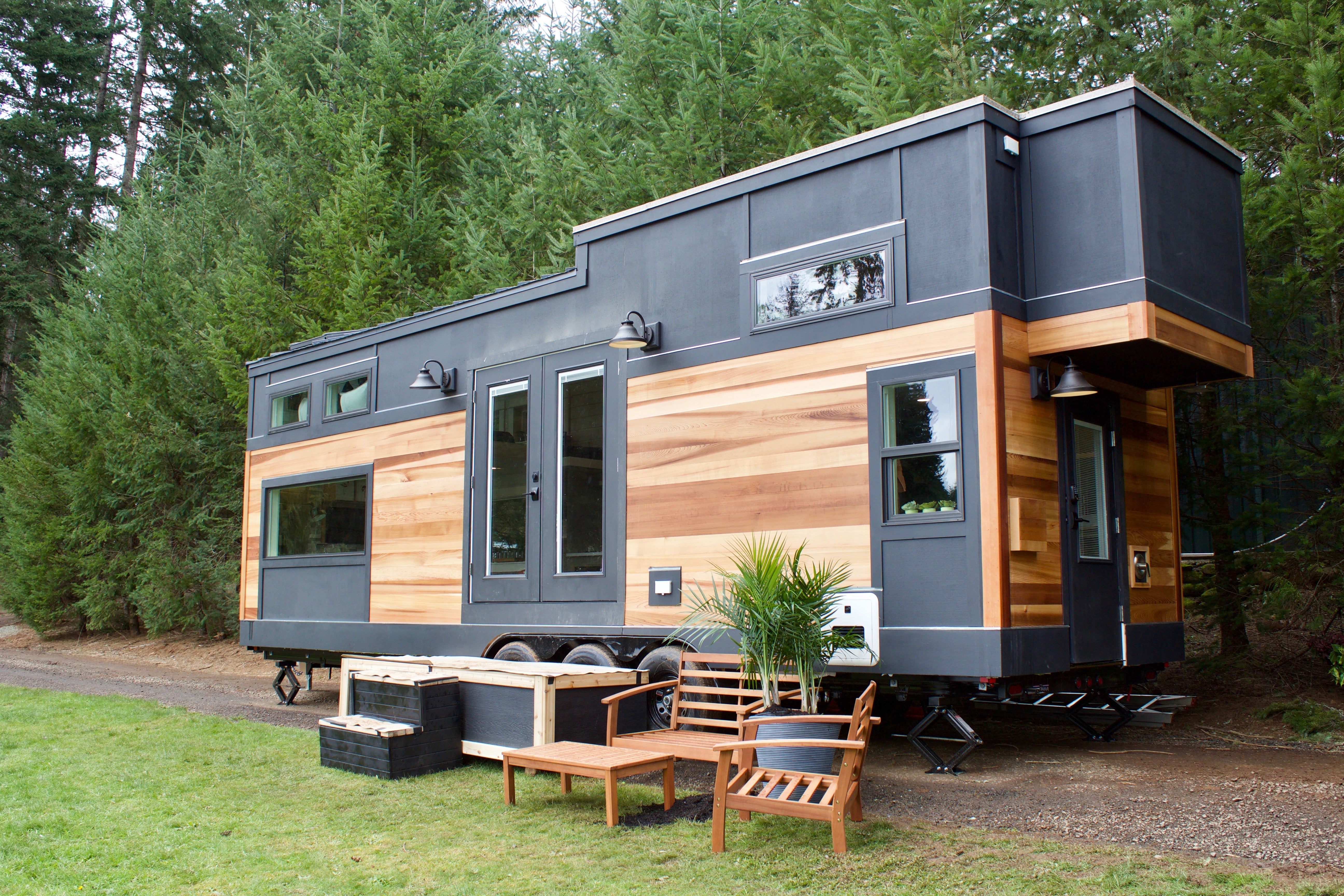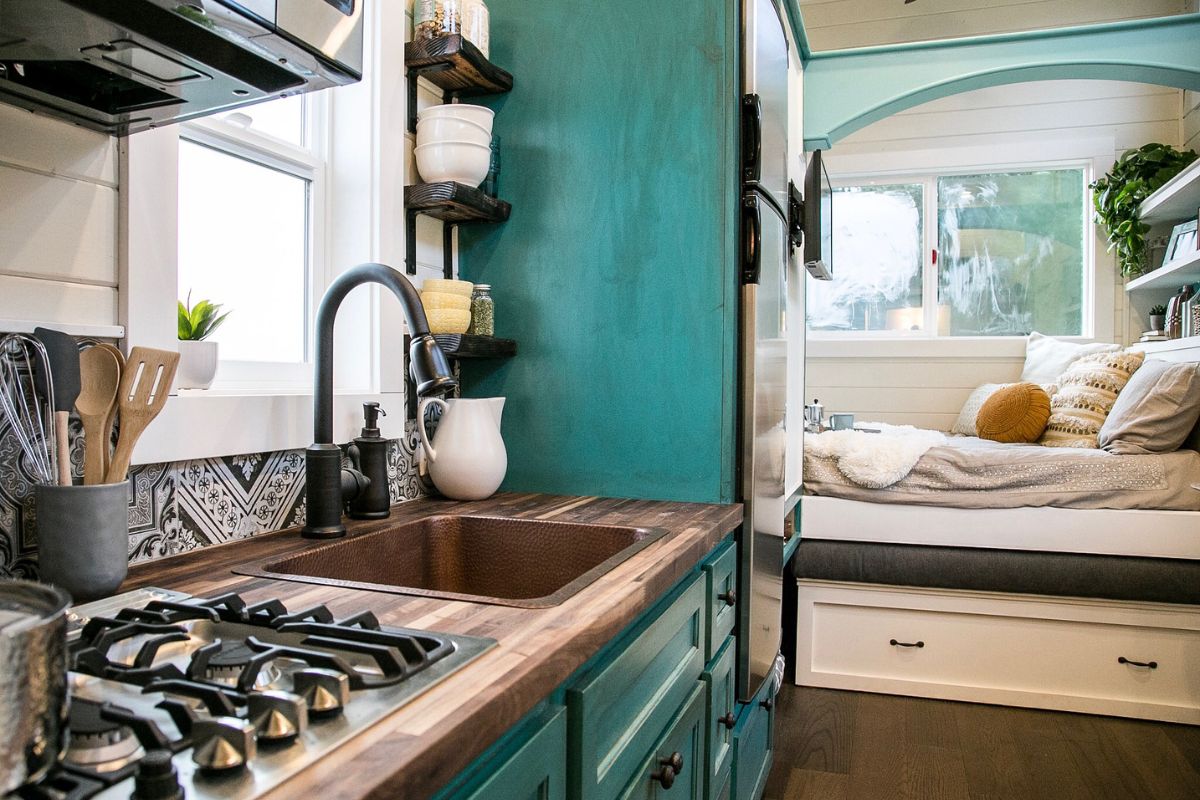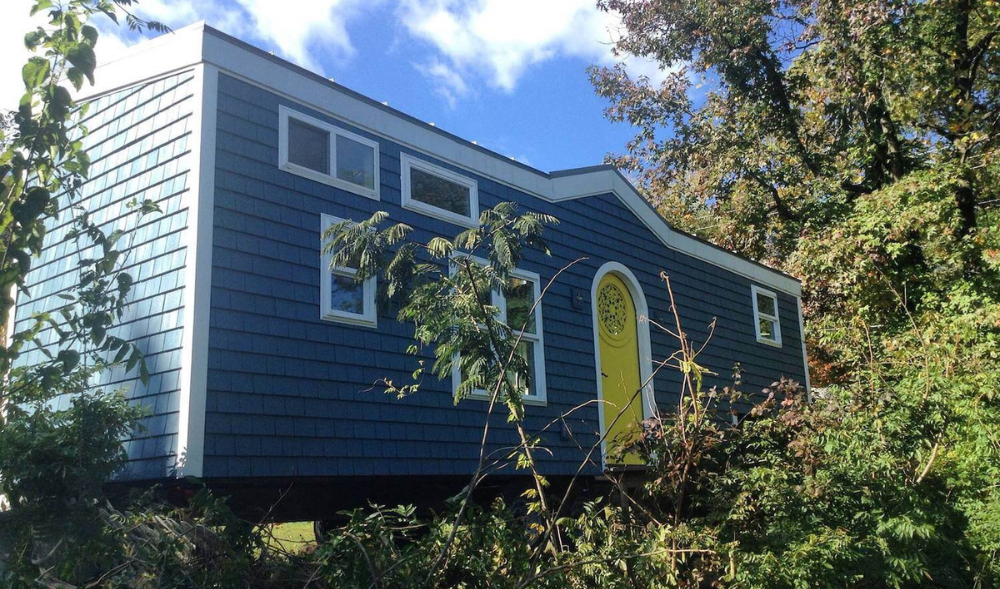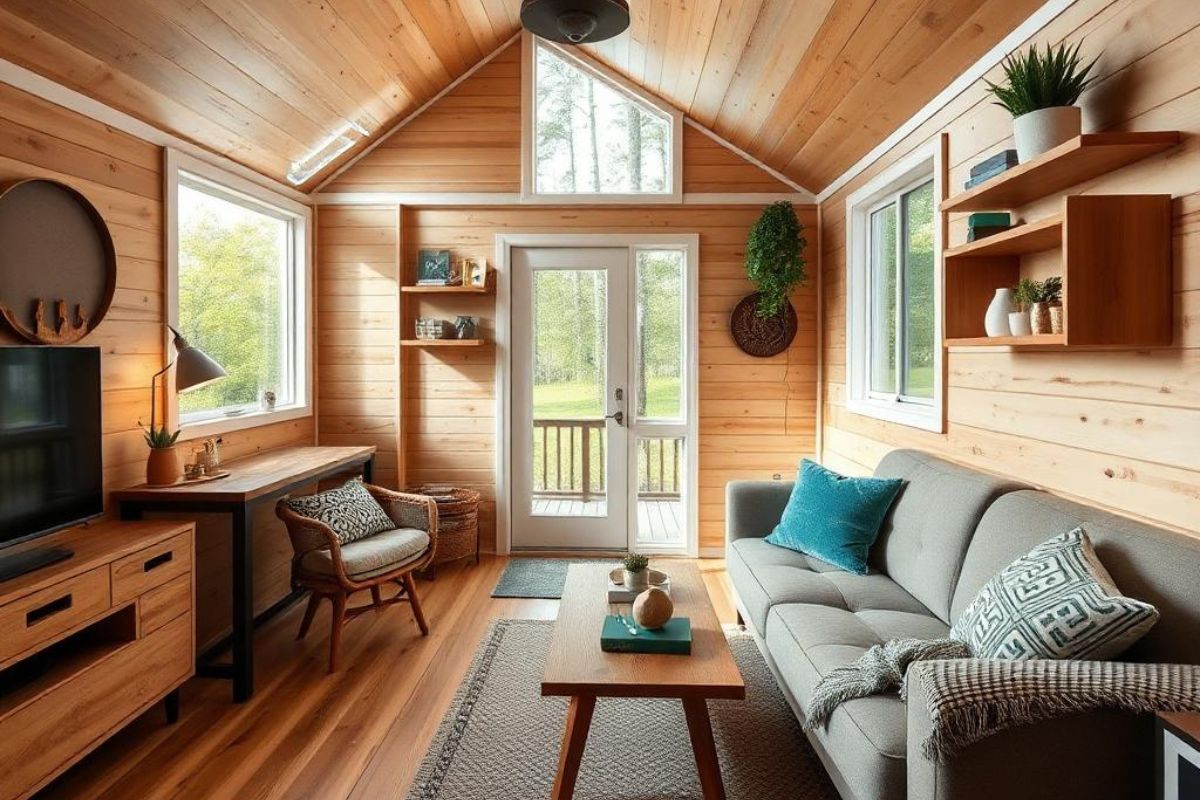If you want to maximize space in your tiny house without losing its compact charm, consider adding slide outs—expandable sections that instantly boost your living area when you need it, yet slide back to keep your footprint small. They’re perfect for creating roomy kitchens, bedrooms, or cozy nooks and offer smart storage without clutter. With the right materials and proper maintenance, slide outs give you flexibility and comfort. Stick with us to see just how creative—and practical—your tiny home can become.
Key Takeaways
-
Slide outs instantly expand living, kitchen, or bedroom areas, increasing usable square footage only when needed.
-
Retractable designs keep the tiny house compact for travel or limited lot sizes.
-
Proper insulation and weatherproofing of slide outs prevent heat loss and water leaks.
-
Quality sliding mechanisms and sturdy materials ensure reliable, long-lasting operation.
-
Strategic placement of slide outs enhances comfort, storage, and functional separation of living spaces.
What Are Slide Outs and How Do They Work in Tiny Houses?
When you’re trying to make every square foot count in a tiny house, slide outs can be a game-changer. Slide outs are sections of your home that extend outward, either manually or with the push of a button. You’ll usually find them in RVs, but they’re becoming popular in tiny houses for good reason. With a slide out, you can expand a room—like the living area, kitchen, or bedroom—when you’re parked or settled in.
The mechanism typically uses rails and motors (or manual levers) to smoothly move the wall out. It’s important to pay attention to weatherproofing and insulation, so you don’t lose heat or invite leaks. If you plan well, slide outs can add valuable flexible space without increasing your home’s permanent footprint.

Key Benefits of Slide Outs for Tiny Living
Flexibility stands out as the biggest advantage slide outs bring to tiny living. With slide outs, you can instantly expand your home’s usable space when you need it, and retract it for travel or a smaller footprint. This adaptability means you don’t have to compromise on comfort or function. Want a larger living area for guests or a cozy bedroom retreat? Slide outs make it possible without increasing your home’s trailer size or overall square footage.
You’ll also benefit from improved storage options and better room separation. Slide outs let you define spaces for different activities—like cooking, working, or relaxing—so your tiny house feels less cramped. Ultimately, slide outs help you make the most of every inch, maximizing both comfort and efficiency in your small space.
Popular Slide Out Designs and Layout Ideas
With so many advantages, it’s no surprise that slide outs have inspired a range of creative designs for tiny homes. You’ll find kitchen slide outs, which let you expand your cooking space when needed and tuck it away for more living area. Bedroom slide outs are popular for creating a larger sleeping area without sacrificing the main floor. You can also use slide outs for dining nooks, reading corners, or compact offices—perfect if you need a dedicated workspace. Many people design living room slide outs to fit a small sofa or even extra storage. When planning your layout, think about which areas you use most often and how a slide out could make them more functional. Prioritize flexibility and daily comfort in your design choices.

Materials and Mechanisms: Building a Durable Slide Out
Although slide outs can dramatically increase your tiny house’s usable space, they require sturdy materials and reliable mechanisms to stand up to daily use. When choosing materials, opt for lightweight yet durable options like aluminum or structural-grade plywood for the frame. These keep your slide out manageable and strong. For exterior panels, weather-resistant composites or treated wood work well against the elements.
Don’t overlook the hardware. Quality ball-bearing drawer slides or heavy-duty RV slide-out rails guarantee smooth movement and prevent sagging. Use robust gaskets and seals to keep out water and drafts. Regularly lubricate all moving parts to extend their life. By investing in the right materials and mechanisms, you’ll create a slide out that’s both functional and built to last.
Maximizing Functionality: Creative Uses for Slide Outs
When you design your tiny house with slide outs, you open up a range of possibilities for making every square foot work harder. Slide outs aren’t just for expanding living space—they can transform how you use your home. Picture a slide out that holds a dining nook, easily tucked away when not in use. You might dedicate one to a compact office space, letting you work comfortably without sacrificing your main living area. Some people use slide outs for creating larger kitchens or extra storage, perfect for keeping clutter at bay. Even a cozy reading nook or a guest sleeping area can fit in a well-placed slide out. Think about your daily routines and use slide outs strategically to boost comfort and efficiency.
Cost Considerations and Budgeting for Slide Outs
Before you commit to adding slide outs to your tiny house, it’s important to understand how they’ll impact your budget. Slide outs can greatly increase your upfront costs, especially if you’re hiring professional builders or opting for high-quality materials. Factor in the price of engineering, custom framing, and waterproofing, as these features aren’t standard in most tiny homes. Don’t forget the cost of hardware and mechanisms—manual slide outs tend to be more affordable, while electric options offer convenience at a higher price.
To stay on budget, get detailed quotes and compare the costs of DIY versus professional installation. Also, set aside a contingency fund for unexpected expenses. By planning ahead, you’ll avoid surprises and make sure your expanded living space fits your financial goals.
Maintenance Tips and Common Challenges With Slide Outs
Regular upkeep keeps your tiny house slide outs working smoothly and prevents costly repairs down the road. Start by inspecting seals and gaskets regularly—damaged or worn-out seals can let in water and drafts. Lubricate the slide mechanisms every few months to prevent sticking or grinding. Keep the tracks clean and free of debris, as dirt buildup can strain the motor and gears. Check for any unusual noises or slow movement, which could signal mechanical wear.

Common challenges include water leaks, misalignment, and electrical issues. If you notice moisture inside, act quickly to reseal and dry the area. For alignment problems, adjust the slide per the manufacturer’s instructions. Electrical problems often stem from loose wiring, so inspect connections if your slide isn’t operating correctly.
Conclusion
When you add slide outs to your tiny house, you’ll open up a whole new world of space and flexibility. With smart design choices and durable materials, you can enjoy extra room without sacrificing mobility or style. Remember to budget carefully, maintain your mechanisms, and get creative with your layout. By making the most of slide outs, you’ll maximize every square foot and create a tiny home that truly fits your needs and lifestyle.






Share: